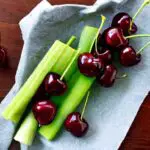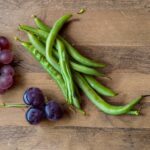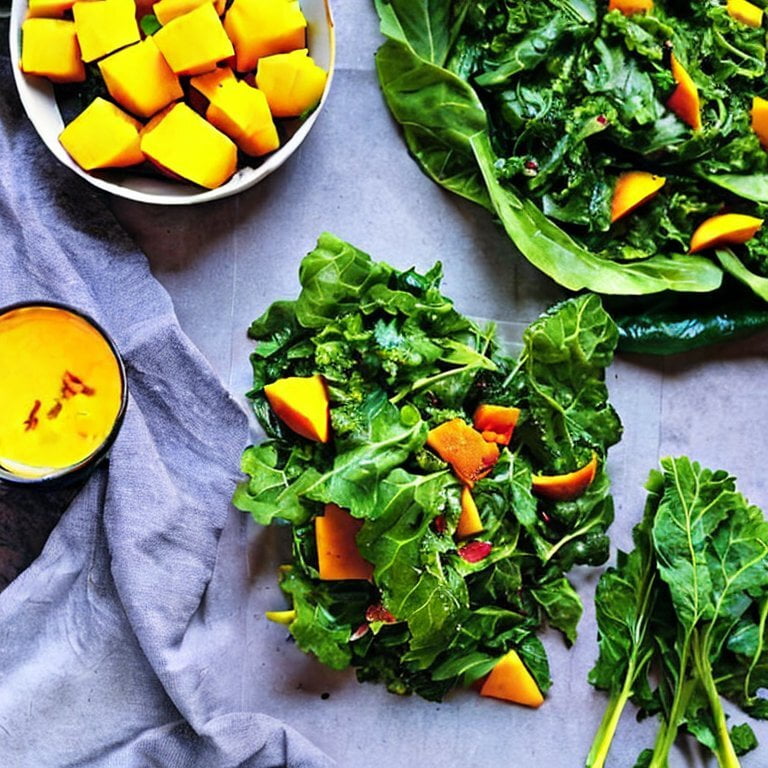
Fruits and vegetables come in all shapes and sizes, and each one has its own unique set of health benefits. In this article, we will be exploring some of the most delicious and nutritious fruits and vegetables that start with the letter M. From the juicy mango to the crunchy mushrooms, there’s no shortage of tasty options to choose from.
In this post we will look at fruits and vegetables that start with M. We will start first with the fruits, and then look at the vegetables beginning with M. (You may also be interested in the separate posts Fruits That Start With M and Vegetables that Start with the Letter M)
Contents
- Fruits that Start with M
- Mandarin
- Mango
- Mangosteen
- Mulberry
- Muscadine grape
- Muskmelon
- Macadamia nut
- Mamey sapote
- Marionberry
- Mayhaw
- Medlar
- Melon
- Mirabelle plum
- Mission fig
- Monstera deliciosa fruit
- Morello cherry
- Mustard apple
- Mysore raspberry
- Mabolo fruit
- Mahaleb cherry
- Malay apple
- Malpighia emarginata (acerola)
- Mammoth blackberry
- Manchineel fruit
- Manila tamarind
- Marang
- Maraschino cherry
- Marglobe tomato
- Marion plum
- Marsh grapefruit
- Mazzard cherry
- Medinilla magnifica fruit
- Melinjo
- Melogold grapefruit
- Midknight Valencia orange
- Minneola tangelo
- Morinda citrifolia (noni fruit)
- Marula
- Mountain soursop
- Mora berries
- Maqui berries
- Vegetables That Start With M
- Mushrooms
- Mustard greens
- Mizuna
- Mung bean sprouts
- Malanga
- Mangetout (snow peas)
- Marrow
- Martynia (cat’s claw)
- Mashua
- Mâche (corn salad)
- Mexican sour gherkin (Melothria scabra)
- Microgreens
- Maca root (Peruvian ginseng)
- Morogo (African spinach)
- Moth bean (matki)
- Murasaki imo (Japanese purple sweet potato)
- Mooli (Daikon radish)
- Mirliton (chayote squash)
- Mulukhiyah
- Final Thoughts
- Other Fruits and Vegetables Lists
Fruits that Start with M
Fruits are a great source of vitamins, minerals, and antioxidants, and the letter M offers a wide variety of fruits to choose from. From sweet to tangy, juicy to pulpy, there are many delicious options for those looking for a healthy snack or a refreshing addition to a meal.
In this list, we will explore some of the most popular and unique fruits that start with the letter M.
Mandarin
Mandarin is a citrus fruit that is smaller than an orange and has a sweeter flavor. It is native to China, but is now grown in many parts of the world. Mandarin is a good source of vitamin C, folate, and fiber.
Mango
Mango is a tropical fruit that is native to South Asia and is now grown in many tropical and subtropical regions of the world. It has a juicy, fleshy interior with a large, flat seed in the center. The skin of a mango can be green, yellow, red, or a combination of these colors, and the flesh can range in color from orange to yellow.
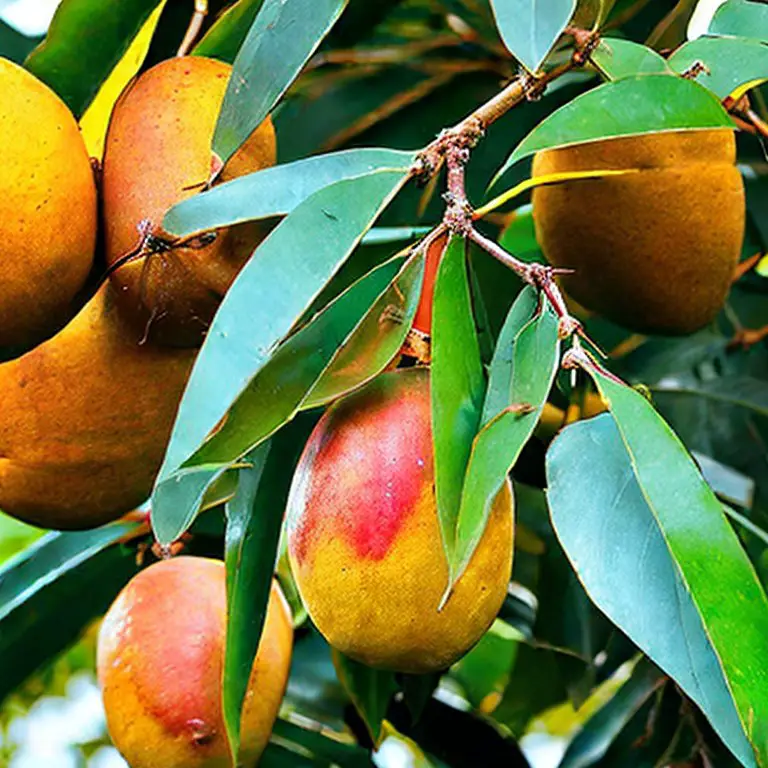
Mangoes are often eaten fresh, but they can also be used in a variety of dishes, such as salads, smoothies, and chutneys. They are a rich source of vitamins A and C, as well as dietary fiber.
Mangosteen
Mangosteen is a tropical fruit that is native to Southeast Asia. It has a hard, purple outer shell and a white, juicy flesh inside. Mangosteen is a good source of vitamins and minerals, including vitamin C, potassium, and fiber.
Mulberry
Mulberry is a type of fruit that is native to warm temperate and subtropical regions of the world. It is small and dark in color, with a sweet, juicy flesh that is often eaten fresh or used in jams and other preserves.
The mulberry tree is a fast-growing deciduous tree that can reach heights of up to 25 feet. It has large, lobed leaves and clusters of small white or pink flowers that give way to the fruit.
There are three main types of mulberry: white, red, and black. The white variety is the most common, and its fruit is used to make mulberry jam and other preserves. The red and black varieties are less common and are typically used for medicinal purposes.
Mulberries are a good source of vitamins A and C, as well as dietary fiber.
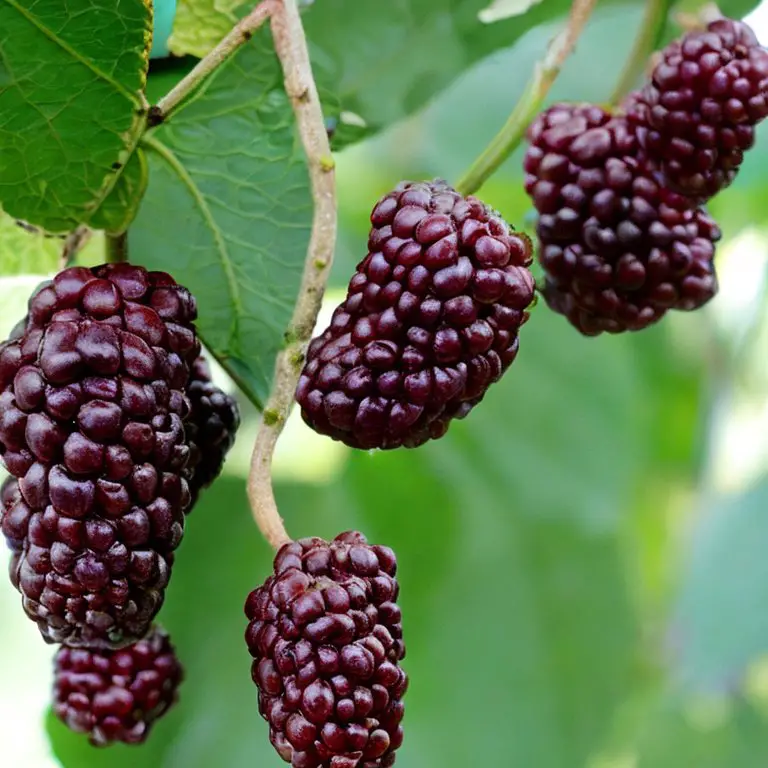
Muscadine grape
Muscadine grapes are a type of grape that are native to the southeastern United States. They are larger than traditional grapes, with a thick skin and a sweet, musky flavor. Muscadine grapes are high in antioxidants and fiber.
Muskmelon
Muskmelon is a type of melon that is native to Asia and is now grown in many parts of the world. It is known for its sweet, juicy flesh and distinctive musky aroma.
Muskmelons are often eaten fresh or used in salads and other dishes. They are a good source of vitamins A and C, as well as dietary fiber.
There are many different varieties of muskmelon, including cantaloupe, honeydew, and casaba. The fruit has a hard, ridged skin that is typically green, yellow, or orange in color, and the flesh is typically orange or yellow.
Macadamia nut
The macadamia nut is a round, creamy-white nut that is native to Australia. (This makes the list of fruits since it is many times technically referred to as a fruit.) It is a popular nut that is often eaten raw or roasted, and it is also used in baking and cooking. Macadamia nuts are a good source of healthy fats, protein, and fiber.
Mamey sapote
The mamey sapote is a tropical fruit that is native to Central and South America. It is a large fruit with a tough, brownish-red outer skin and a sweet, orange flesh. Mamey sapote is rich in vitamins and minerals, including vitamin C, vitamin A, and potassium.
Marionberry
Marionberry is a type of blackberry that is native to the Pacific Northwest region of the United States. It has a sweet and tart flavor and is commonly used in jams, pies, and other desserts. Marionberry is rich in vitamins and minerals, including vitamin C, vitamin K, and fiber.
Mayhaw
Mayhaw is a type of fruit that is native to the southern United States. It is similar in appearance to a small apple or crabapple, and has a tart flavor. Mayhaw is often used to make jelly, jam, and syrup.
Medlar
Medlar is a fruit that is native to Europe and Asia. It has a brownish-green outer skin and a sweet, juicy flesh inside. Medlar is often eaten when it is soft and overripe, and is used in desserts and jams.
Melon
Melon is a fruit that is related to cucumbers, pumpkins, and squash. It has a sweet and juicy flesh and is commonly eaten as a dessert or used in salads. Melon is a good source of vitamins and minerals, including vitamin C, vitamin A, and potassium.
Mirabelle plum
Mirabelle plum is a small, sweet fruit that is native to France. It is commonly used to make jam, and is also used in pies and other desserts. Mirabelle plum is rich in vitamins and minerals, including vitamin C, vitamin K, and potassium.
Mission fig
Mission figs are a type of fig that is purple-black in color and known for their sweetness and soft texture. They are a good source of fiber and essential minerals like potassium, calcium, and iron.
Monstera deliciosa fruit
Monstera deliciosa fruit, also known as the Swiss cheese plant fruit, is a tropical fruit with a unique appearance and taste. It has a green, scaly exterior with a white, juicy flesh and a tropical flavor that is often compared to a combination of pineapple and banana.
Morello cherry
Morello cherries are a type of sour cherry that are commonly used in cooking and baking. They are rich in antioxidants and vitamin C, and have a tart, tangy flavor that pairs well with sweet dishes.
Mustard apple
Mustard apples, also known as hog plums, are a type of fruit that grows on trees in tropical regions. They have a sour, tangy taste and are often used in chutneys and pickles.
Mysore raspberry
Mysore raspberries are a type of raspberry that are native to India. They have a slightly tart flavor and are often used in jams and jellies.
Mabolo fruit
Mabolo fruit, also known as velvet apple, is a tropical fruit that is native to Southeast Asia. It has a fuzzy, brown exterior and a soft, white flesh that is sweet and slightly tangy.
Mahaleb cherry
Mahaleb cherries are a type of small, sour cherry that is commonly used in baking and cooking. They have a slightly bitter taste and are often used to flavor sweet dishes.
Malay apple
Malay apple is a fruit that is native to Malaysia and other Southeast Asian countries. It has a sweet and slightly tart taste, and a firm and crunchy texture. The fruit is commonly eaten fresh, and is also used in salads, desserts, and drinks. The Malay apple is a good source of vitamin C, fiber, and antioxidants.
Malpighia emarginata (acerola)
Malpighia emarginata, commonly known as acerola, is a tropical fruit that is native to South and Central America. It has a tangy and slightly sweet flavor, and is often used in juices, smoothies, and other beverages. Acerola is a rich source of vitamin C, antioxidants, and other nutrients, and is believed to have many health benefits.
Mammoth blackberry
Mammoth blackberry is a type of blackberry that is known for its large and juicy fruits. It has a sweet and tangy flavor, and is commonly used in jams, jellies, and other desserts. Mammoth blackberry is a good source of fiber, vitamins, and antioxidants.
Manchineel fruit
Manchineel fruit is a highly toxic fruit that is native to the Caribbean and South America. It resembles a small green apple, and has a sweet and tangy taste. However, the fruit and other parts of the manchineel tree contain a highly toxic sap that can cause severe skin irritation and even death if ingested.
Manila tamarind
Manila tamarind is a tropical fruit that is native to the Philippines. It has a sweet and tangy flavor, and is often used in soups, stews, and other dishes. The fruit is also believed to have medicinal properties, and is a good source of vitamins, minerals, and antioxidants.
Marang
Marang is a tropical fruit that is native to Southeast Asia. It has a sweet and creamy flavor, and is often used in desserts and other sweet dishes. Marang is a good source of vitamins, minerals, and antioxidants.
Maraschino cherry
Maraschino cherry is a type of cherry that is preserved in a sweet syrup made with maraschino liqueur. It has a sweet and slightly tart flavor, and is often used as a garnish in cocktails and desserts. Maraschino cherry is a good source of antioxidants and other nutrients.
Marglobe tomato
Marglobe tomato is a type of tomato that is known for its large and meaty fruits. It has a sweet and tangy flavor, and is often used in sauces, soups, and other dishes. Marglobe tomato is a good source of vitamins, minerals, and antioxidants.
Marion plum
Marion plum is a type of plum that is known for its dark purple skin and sweet and juicy flesh. It is commonly used in jams, jellies, and other desserts. Marion plum is a good source of vitamins, minerals, and antioxidants.
Marsh grapefruit
Marsh grapefruit is a type of grapefruit that is known for its large and juicy fruits. It has a sweet and tangy flavor, and is often used in juices, salads, and other dishes. Marsh grapefruit is a good source of vitamins, minerals, and antioxidants.
Mazzard cherry
The mazzard cherry is a type of sour cherry that is often used for making jams and jellies. It is also used in baking and cooking.
Medinilla magnifica fruit
The Medinilla magnifica fruit is a small, edible fruit that is grown in the Philippines. It has a sweet, delicate flavor and is often used in jams and jellies.
Melinjo
Melinjo is a type of fruit that grows on a tree native to Southeast Asia. The fruit is small and has a slightly bitter flavor, and is often used in traditional Indonesian dishes.
Melogold grapefruit
The Melogold grapefruit is a cross between a pomelo and a white grapefruit. It has a sweet, mild flavor and is low in acidity.
Midknight Valencia orange
The Midknight Valencia orange is a type of orange that is grown in California. It has a sweet, juicy flavor and is commonly used for juicing.
Minneola tangelo
The Minneola tangelo is a hybrid citrus fruit that is a cross between a tangerine and a grapefruit. It has a sweet and tangy flavor, and is commonly used in salads and desserts.
Morinda citrifolia (noni fruit)
The noni fruit is a tropical fruit that is native to Southeast Asia and the Pacific Islands. It has a pungent odor and a bitter taste, and is often used in traditional Polynesian medicine.
Marula
Marula is a type of fruit that is native to southern Africa. It is often used to make a popular beverage known as Amarula. The fruit has a juicy, sweet flesh that is often eaten fresh or used to make jams, jellies, and other preserves.
The marula tree is a small to medium-sized tree that can reach heights of up to 30 feet. It has dark green, elliptical leaves and clusters of small, white flowers that give way to the fruit.
The fruit itself is yellow or green in color and has a hard, inedible outer shell that encloses the juicy flesh inside.
Marulas are a good source of vitamins A and C, as well as dietary fiber.
Mountain soursop
The mountain soursop is a fruit that grows on a tree native to Central and South America. It has a sweet, juicy flavor and is commonly used in juices and smoothies.
Mora berries
Mora berries are a type of blackberry that are native to the Andean region of South America. They are also known as Andean blackberries or Andean raspberries. Mora berries are similar in appearance and flavor to blackberries and raspberries, with a dark purple color and a sweet-tart flavor.
They are high in antioxidants, such as anthocyanins and flavonoids, which help to reduce inflammation and protect against cell damage. They are also a good source of fiber, vitamin C, and potassium, which help to support digestive health and maintain healthy blood pressure.
Maqui berries
Maqui berries are a superfood that are native to Chile and Argentina. They have been used for centuries by the Mapuche indigenous people for their medicinal properties. Maqui berries are dark purple in color, with a slightly sweet and tart flavor.
They are high in antioxidants, such as anthocyanins and polyphenols, which help to reduce inflammation and protect against oxidative stress. They are also a good source of vitamin C, iron, and calcium, which help to support the immune system and maintain healthy bones.
Vegetables That Start With M
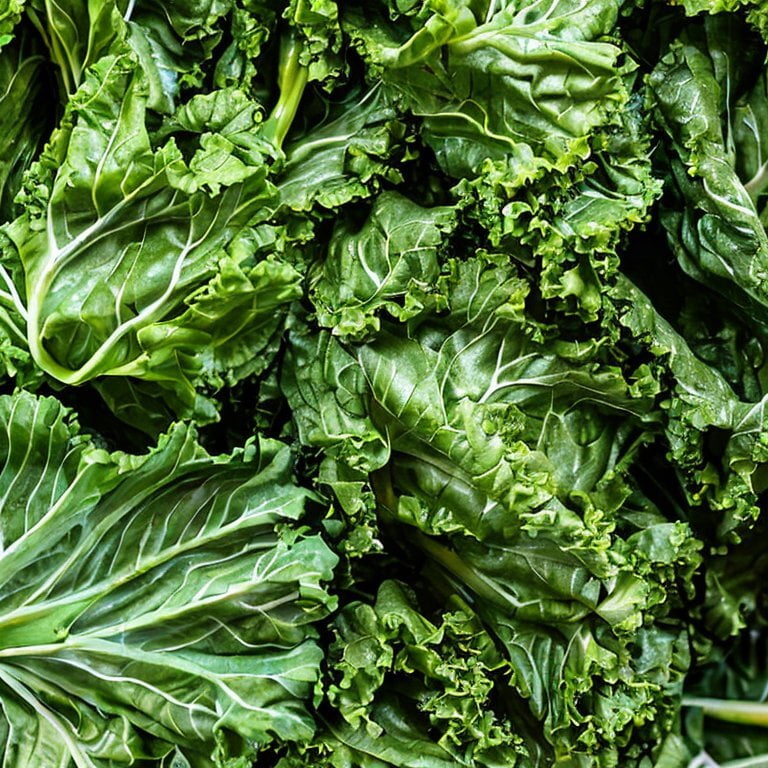
Vegetables are an important part of a healthy and balanced diet, providing essential vitamins, minerals, and fiber to the body. There are many different types of vegetables, each with its own unique flavor, texture, and nutritional benefits. In this article, we will explore some of the most popular vegetables that start with the letter “M.”
Here are vegetables that start with M:
Mushrooms
Mushrooms are a type of fungus that grow above ground and have a fleshy cap and stem. They are a popular ingredient in many dishes and come in a variety of types, including shiitake, portobello, and button mushrooms. Mushrooms are low in calories and rich in vitamins, minerals, and antioxidants. They are also a good source of protein and dietary fiber.
Mustard greens
Mustard greens are leafy vegetables that are part of the Brassica family, which includes broccoli, cabbage, and kale. They have a slightly bitter taste and are often used in salads, stir-fries, and soups. Mustard greens are low in calories and high in vitamins A, C, and K, as well as calcium, iron, and potassium. They also contain antioxidants and anti-inflammatory compounds.

Mizuna
Mizuna is a type of Japanese mustard green that has a peppery taste and is often used in salads and stir-fries. It has a delicate texture and a slightly sweet flavor. Mizuna is a good source of vitamins A, C, and K, as well as calcium and iron. It also contains antioxidants and anti-inflammatory compounds.
Mung bean sprouts
Mung bean sprouts are sprouted from mung beans and are commonly used in Asian cuisine. They have a crunchy texture and a mild, nutty flavor. Mung bean sprouts are low in calories and high in protein, vitamins, and minerals. They are also a good source of antioxidants and anti-inflammatory compounds.
Malanga
Malanga is a root vegetable that is popular in Latin American and Caribbean cuisine. It has a brown, hairy exterior and a starchy, white flesh. Malanga is a good source of fiber, vitamins, and minerals, including vitamin C, potassium, and magnesium. It is also low in calories and fat. Malanga can be boiled, mashed, or fried and used in a variety of dishes, including soups, stews, and fritters.
Mangetout (snow peas)
These are a type of pea pod that are eaten whole while the peas inside are still immature. They are commonly used in stir-fries, salads, and as a side dish.
Marrow
Marrow is a type of squash that is typically harvested when it is young and tender. It can be cooked in a variety of ways, including roasting, grilling, or sautéing, and is a good source of vitamins and minerals.
Martynia (cat’s claw)
Martynia is a type of plant that is also known as cat’s claw due to its distinctive claw-like seed pods. The pods are edible and can be used in a variety of dishes, including stews, soups, and curries.
Mashua
Mashua is a root vegetable that is native to the Andes Mountains. It is similar in appearance to a sweet potato, and can be boiled, mashed, or roasted. It is a good source of vitamins and minerals, and is also high in antioxidants.
Mâche (corn salad)
Mâche, also known as corn salad, is a type of lettuce that is native to Europe. It has small, dark green leaves that are tender and slightly nutty in flavor. It is commonly used in salads, and is also a good source of vitamins and minerals.
Mexican sour gherkin (Melothria scabra)
Also known as cucamelon, this tiny fruit is native to Mexico and Central America. Resembling miniature watermelons, they have a crunchy texture and a tangy, sour flavor that’s similar to cucumbers. They can be eaten raw or pickled, and are a good source of vitamin C and antioxidants.
Microgreens
Microgreens are young vegetable greens that are harvested just a few weeks after germination. They are packed with nutrients and come in a variety of flavors and colors. They are often used as a garnish or added to salads and sandwiches, and are a popular ingredient in fine-dining restaurants.
Maca root (Peruvian ginseng)
Maca root is a type of root vegetable that is native to the Andes mountains of Peru. It has been used for thousands of years as a medicinal plant and is believed to have several health benefits, including increased energy, improved mood, and enhanced libido. Maca root is also a rich source of vitamins and minerals, including vitamin C, iron, and copper, and can be eaten fresh or dried and powdered.
Morogo (African spinach)
Also known as Amaranthus blitum, this leafy green vegetable is commonly found in Africa and Asia. It has a slightly bitter taste and is often used in stews, soups, and curries. It is a good source of fiber, vitamins, and minerals, and has been traditionally used to treat a variety of ailments.
Moth bean (matki)
Moth bean is a small, drought-resistant legume that is commonly grown in India and other parts of Asia. It is often used in curries, stews, and salads, and has a nutty, earthy flavor. It is a good source of protein, fiber, and vitamins, and is also known for its health benefits, including improved digestion and lower cholesterol levels.
Murasaki imo (Japanese purple sweet potato)
This variety of sweet potato is native to Japan and has a deep purple skin and flesh. It has a slightly sweet, nutty flavor and a soft, creamy texture. It is often used in Japanese cuisine, and can be roasted, steamed, or mashed. It is a good source of fiber, vitamins, and antioxidants.
Mooli (Daikon radish)
Mooli, also known as daikon radish, is a root vegetable commonly used in Asian cuisine. It has a mild and slightly sweet flavor and a crispy texture that makes it a popular ingredient in salads, pickles, and stir-fries. Mooli is also rich in vitamin C and other antioxidants, as well as fiber and potassium.
Mirliton (chayote squash)
Mirliton, also known as chayote squash, is a type of gourd that is popular in Latin American and Caribbean cuisine. It has a mild flavor and a texture that is similar to zucchini, making it a versatile ingredient in soups, stews, and stir-fries. Mirliton is also low in calories and high in fiber, as well as vitamin C and potassium.
Mulukhiyah
Mulukhiyah, also known as jute leaf, is a leafy vegetable that is commonly eaten in Middle Eastern and North African cuisine. It has a slightly bitter and earthy flavor and a slimy texture when cooked. Mulukhiyah is a rich source of vitamins A and C, as well as iron and calcium, and is often used to make a traditional soup or stew.
Final Thoughts
In conclusion, adding fruits and vegetables that start with M to your diet can help you achieve a well-balanced and healthy lifestyle. Whether you’re looking to boost your immune system, improve your digestion, or simply enjoy some delicious and nutritious snacks, there’s no better way to do it than by incorporating these amazing fruits and vegetables into your meals.
So go ahead and try out some of these delicious M foods today and feel the difference in your health and well-being!
Other Fruits and Vegetables Lists
Fruits and Vegetables Lists A-Z
- Fruits and Vegetables that Start with A
- Fruits and Vegetables that Start with B
- Fruits and Vegetables that Start with C
- Fruits and Vegetables that Start with D
- Fruits and Vegetables That Start With E
- Fruits and Vegetables that Start with F
- Fruits and Vegetables that Start with G
- Fruits and Vegetables that Start with I
- Fruits and Vegetables that Start with M
- Fruits and Vegetables that Start with R
- Fruits and Vegetables that Start with X
- Fruits and Vegetables that Start with Y
- Fruits and Vegetables that Start with Z
- Fruits and Vegetables Lists A-Z
Fruits Lists A-Z
- List of Fruits from A-Z (in Alphabetical Order)
- Fruits that Start with A
- Fruits That Start with B
- Fruits that Start with C
- Fruits that Start with D
- Fruits that Start With E
- Fruits that Start with F
- Fruits that Start with G
- Fruits that Start with I
- Fruits that Start with M
- Fruits that Start with R
- Fruits that Start with S
- Fruits that Start with W
- Fruits that Start with X
- Fruits that Start with Y
- Fruits that Start with Z
- 100 Fruit Names (Most Popular Fruits in the World)
- Top 50 Fruits Names List
- Top 20 Fruit Names
- Fruits Lists A-Z
- List of Berries A-Z
- Berries Lists A-Z
Vegetables Lists A-Z
- Vegetables List A-Z in Alphabetical Order
- Vegetables that Start with A
- Vegetables that Start with B
- Vegetables that Start with C
- Vegetables that Start with D
- Vegetables that Start with E
- Vegetables that Start with F
- Vegetables that Start with G
- Vegetables that Start with I
- Vegetables that Start with M
- Vegetables that Start with R
- Vegetables that Start with X
- Vegetables that Start with Y
- Vegetables that Start with Z
- Vegetables Lists A-Z
- 100 Vegetable Names (Most Common in the World)

Fruits and Vegetables That Start With M
Ingredients
Fruits that Start with M
- Mango
- Mandarin
- Mangosteen
- Mulberry
- Muscadine grape
- Muskmelon
- Macadamia nut
- Mamey sapote
- Marionberry
- Mayhaw
- Medlar
- Melon
- Mirabelle plum
- Mission fig
- Monstera deliciosa fruit
- Morello cherry
- Mustard apple
- Mysore raspberry
- Mabolo fruit
- Mahaleb cherry
- Malay apple
- Malpighia emarginata acerola
- Mammoth blackberry
- Manchineel fruit
- Manila tamarind
- Marang
- Maraschino cherry
- Marglobe tomato
- Marion plum
- Marsh grapefruit
- Mazzard cherry
- Medinilla magnifica fruit
- Melinjo
- Melogold grapefruit
- Midknight Valencia orange
- Minneola tangelo
- Morinda citrifolia noni fruit
- Marula
- Mountain soursop
- Maqui berries
- Mora berries
Vegetables that Start with M
- Mushrooms
- Mustard greens
- Mizuna
- Mung bean sprouts
- Malanga
- Mangetout snow peas
- Marrow
- Martynia cat’s claw
- Mashua
- Mâche corn salad
- Mexican sour gherkin Melothria scabra
- Microgreens
- Morogo African spinach
- Moth bean matki
- Murasaki imo Japanese purple sweet potato
- Mooli Daikon radish
- Mirliton chayote squash
- Mulukhiyah
- Maca root Peruvian ginseng
Notes
Lance has been passionate about the plant-based diet and we have been following a whole food plant-based diet for over 5 years. We focus on health, natural healing, weight management, animal rights, and the health of the planet and environment by focusing on whole plant-based foods and sustainable practices.
Learn more at the About Me page and follow on social media at the links below.



